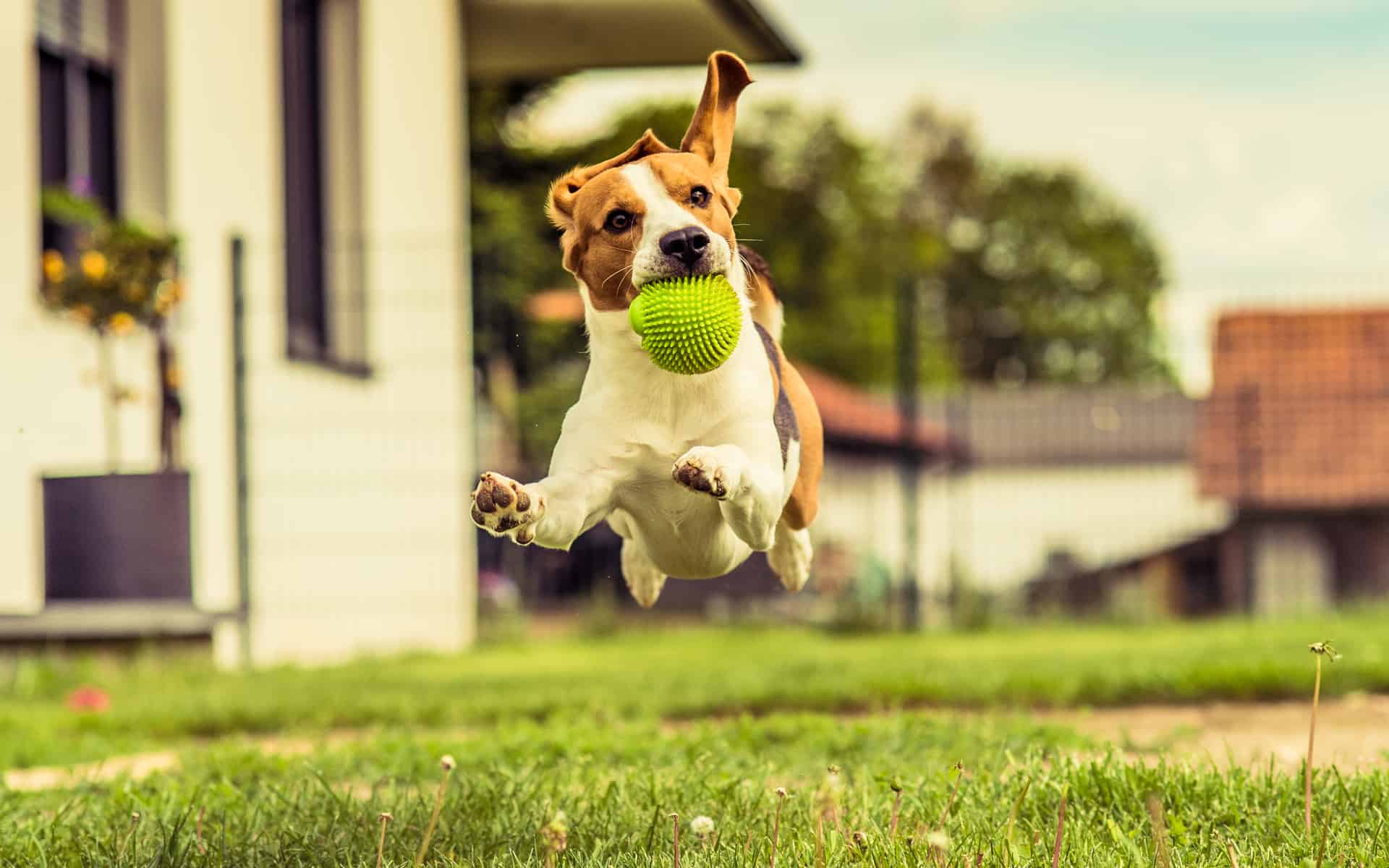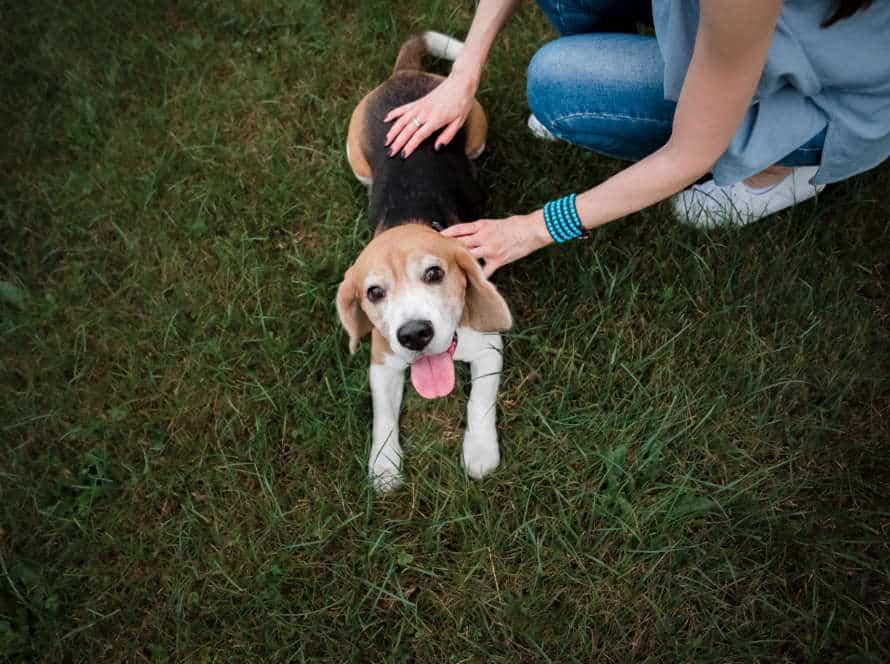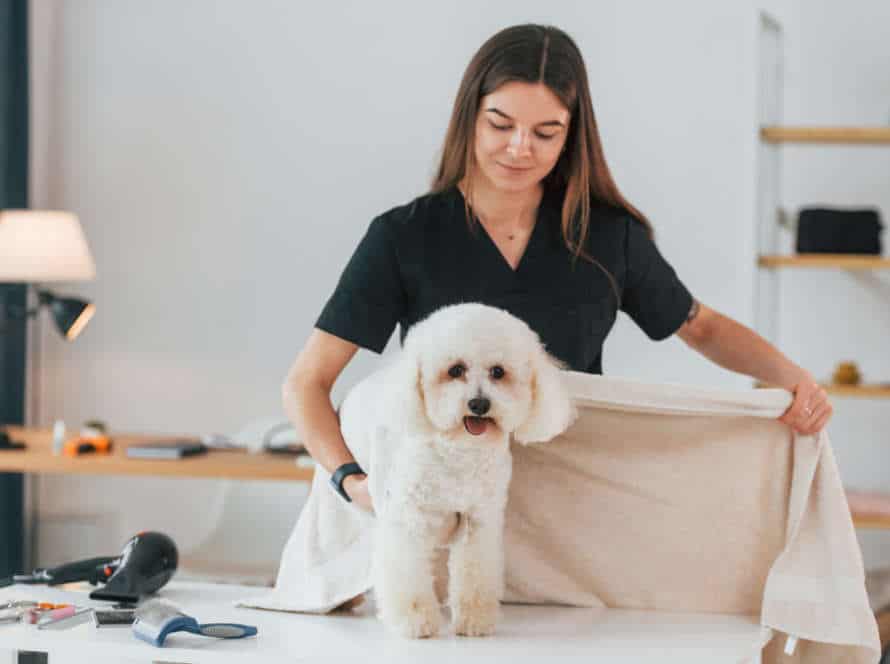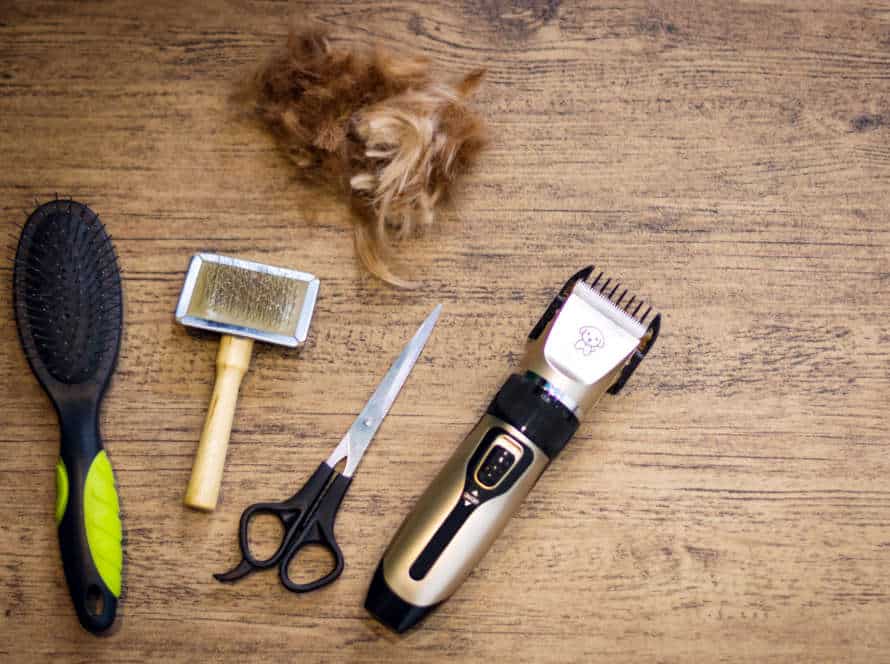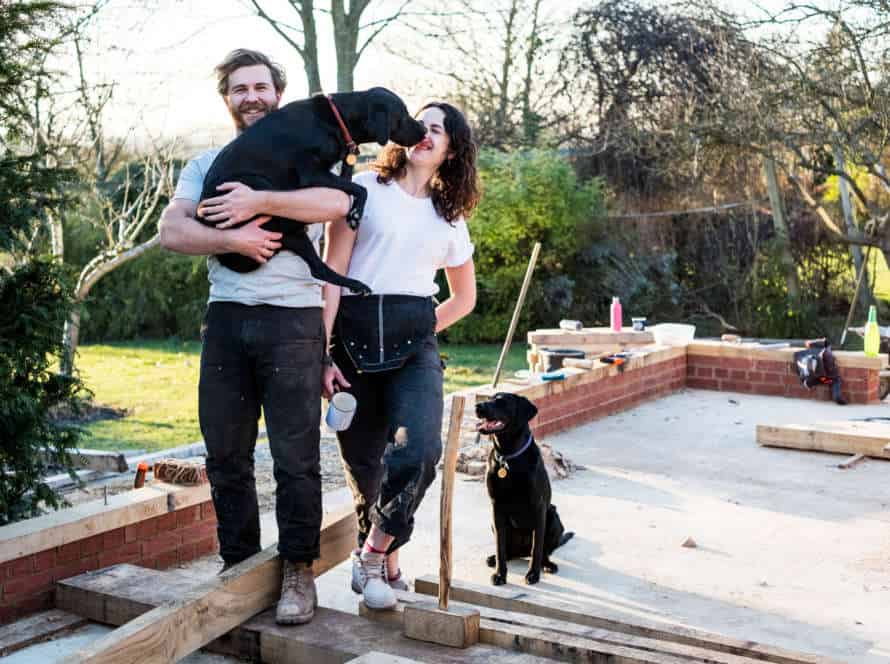Discover the Perfect Exercise Routine for Your Dog
For a pup’s exercise plan to be perfect, it should be based on their age, breed, and size. The best way to promote physical and mental health is to try different activities with varied intensity levels.
Start off by assessing your pup’s fitness, breed, and age. Think about walking, running, swimming, and fetching games. Keep an eye on how your dog responds and make changes as needed.
If you want to make sure your pup’s routine is spot-on, consider seeing a professional dog trainer or behaviorist. They’ll create a tailored plan that helps your pup stay well!
Importance of Exercise for Dogs
Exercise is vital for your doggy’s health. It keeps them fit, stops joint issues, and can even reduce naughty behaviors due to boredom. On top of that, it helps with body chemistry and mental stimulation. Plus, it strengthens the bond between you and your pup!
In this article, we’ll discuss why exercise is important for dogs and how to make a routine that’s best for your pet.
Physical benefits of exercise for dogs
Exercise is vital for a dog’s mental and physical health. Regular exercise can keep them fit and contented. Here are some physical advantages of exercise for dogs:
- Weight Regulation: Exercise can help ward off obesity in dogs, reducing the danger of diabetes, heart disease, and joint issues.
- Muscle Strength: Exercise assists in strengthening a dog’s muscles, promoting better movement and keeping injuries away.
- Immune System Strength: Exercise also bolsters a dog’s immune system and aids in better digestion, leading to an active lifestyle.
- Cardiovascular Health: Exercise helps in improving cardiovascular health and may lengthen your dog’s life.
To craft the perfect exercise routine, think of your dog’s age, size, breed and activity level. Spice up their routine with aerobic exercises, strength training, and interactive games like fetch, tug-of-war or a leisurely stroll. Remember, a dog who exercises enough is healthy and happy, so make sure to prioritize your pet’s physical fitness.
Mental benefits of exercise for dogs
Exercise has many benefits for a dog’s physical and mental health. It can reduce stress, anxiety, and depression. It helps release endorphins, which make your pup feel better. Plus, exercising boosts cognitive abilities, memory, and attention span. It even helps with problem solving and intelligence. And to top it off, it can help your pup sleep better, so they can wake up energized.
In conclusion, regular exercise is great for a dog’s mental health and can help them live a happier life. Ask your vet for advice on the best exercise routine for your pup, based on their breed, age, and physical abilities.
Health risks associated with inadequate exercise
Inadequate exercise poses severe risks to dogs, just like humans. Exercise is a must for a pup’s daily routine; it’s necessary for their physical and mental well-being.
Some health risks that come with not exercising enough are:
- Obesity – this sedentary lifestyle causes too much weight gain, which can strain joints and organs.
- Behavior problems – no exercise means boredom and restlessness, which can lead to destructive or aggressive behaviors.
- Heart disease – a lack of physical activity has a bad effect on the heart.
- Digestive issues – dogs who don’t get enough exercise are prone to constipation and other digestive problems.
For your pup’s health, it’s important to figure out the perfect exercise routine. Depending on their breed, age, and fitness level, the right routine will help their physical health, as well as mentally stimulate them, so they can have a happy life.
Factors to Consider
Exercise is fundamental for canine life! It keeps pups fit and healthy.
When working on the right exercise plan for your doggo, there are a few things to think about. Such as size, breed, age, health, and temperament. Let’s explore each of these elements in more detail.
Dog’s breed, age, and physical capability
When designing an exercise routine for your pup, it is essential to consider their breed, age, and physical capability.
- Different breeds have different exercise needs. Energetic breeds like Greyhounds, Boxers, and Australian Shepherds need more exercise than Pugs or Bulldogs.
- Age is also important. Older pooches may need low-impact activities such as walking or swimming.
- Physical capability is vital too. Dogs with issues like hip dysplasia or breathing difficulties may benefit from low-impact exercises tailored to their needs.
Making sure your dog gets the right exercise promotes their health and well-being.
Owner’s lifestyle and availability for exercise
When picking the perfect exercise routine for your pooch, lifestyle and availability for exercise matter. Think about:
- How much time you can devote to exercising your pup daily.
- Your dog’s breed, age, and health to decide the level and intensity of exercise.
- An exercise routine that works for you, like walking, hiking, biking, or swimming.
- Making a schedule and following it to encourage consistency.
Regular exercise benefits your pup’s physical health, and strengthens your bond. Pro Tip: Use positive reinforcement techniques during exercising to make it a fun experience for your pup.
Environmental factors and safety precautions
When creating an exercise routine for your pup, there are several environmental aspects and safety measures to consider.
Environmental Factors:
- Weather: Exercise them during cooler parts of the day. Provide water breaks.
- Terrain: Choose a terrain suitable for your dog’s fitness level.
- Location: Keep your pup on a leash. Be aware of potential hazards.
Safety Precautions:
- Warm-up and Cool-down: Just like people, dogs need to warm up and cool down.
- Hydration: Water before, during and after exercise.
- Collars and Harnesses: Ensure proper fitting collars and harnesses.
Choose the right exercise routine for your dog’s health and happiness. Keep these environmental factors and safety measures in mind to create a safe and enjoyable experience for your pup.
Pro tip- Consult with your vet before starting a new exercise routine. They will help determine the right type and amount of activity for your pup’s age, breed and overall health.
Types of Exercise
Exercise for pups is essential for wellness and joy! Different activities can be used like walking, running, fetch, agility, swimming, and flyball. Let’s check out the advantages of each one and how they help keep your doggo in shape.
- Walking: is a low-impact exercise that can help dogs burn calories and maintain a healthy weight. It also strengthens their muscles, joints, and bones.
- Running: is a high-impact exercise that can help dogs develop cardiovascular fitness, burn a lot of calories, and release pent-up energy. It’s especially useful for high-energy dogs.
- Fetch: is an activity that can help dogs build agility and speed while having fun. It can improve their hand-eye coordination and strengthen their muscles, including their jaws.
- Agility: is a competitive sport that involves dogs running through obstacle courses. It can help dogs develop balance, coordination, and mental sharpness, as well as build a strong bond with their handlers.
- Swimming: is a non-weight-bearing exercise that can help dogs build strength and cardiovascular fitness while putting less strain on their joints. It can also be a fun way to cool off in hot weather.
- Flyball: is another competitive sport that involves dogs racing through hurdles and retrieving a ball. It can help dogs build speed, agility, and teamwork skills, as well as provide them with mental stimulation and physical exercise.
Walks and Hikes
Dogs adore walks and hikes! But, did you know different breeds need different exercise? It’s vital to find the ideal routine for your pup so they stay fit and cheerful. Here are some exercises to think about:
- Walking: A straightforward and low-impact exercise that most dogs love. Indoors or outdoors – it’s up to you. You can also adjust the pace to suit your pup’s fitness level.
- Hiking: A more demanding exercise, great for endurance breeds like Retrievers and Terriers. Always bring plenty of water and snacks – for you and your pup!
- Swimming: Fantastic for breeds that put strain on their joints, like Bulldogs and Pugs. It’s low-impact, builds strength and improves cardiovascular health.
- Agility Training: Fun and mentally-stimulating exercise, indoors or out. Perfect for breeds like Border Collies and Aussies who are obedience and agility pros.
Remember to talk to your vet before starting any exercise routine. Start slowly and increase your pup’s endurance over time.
Playing Fetch and Other Games
Playing fetch with your pup is a brilliant way to keep them busy and entertained, while also providing necessary exercise. But fetch isn’t the only game that can help your furry friend stay active!
Try tug-of-war for physical exercise that strengthens their jaw muscles. Hide and seek will engage their senses and give them mental stimulation. Agility training can improve coordination and balance, while swimming is a low-impact workout that’s gentle on their joints.
Think about your dog’s age, breed, size, and health when picking the right exercise for them. Combining physical and mental activities into a daily exercise routine can keep your pup happy, healthy, and mentally stimulated.
Swimming
Swimming is a great way for dogs to stay fit. It’s low-impact and keeps them cool on hot days. Plus, there are lots of other exercises to try. Like walking – low-impact and good for all ages. Or running – more intense and great for dogs with high endurance. Fetch is also good – it builds coordination, agility, and speed. Mixing up these exercises will keep dogs healthy and happy.
Creating an Exercise Routine
Exercise can bring joy to dogs’ lives and help them use up their energy! Devising a workout program especially for your pup will bring the two of you even closer. When coming up with a plan, think about your dog’s breed, age, energy level, and size. Let’s get started to ensure your pup gets the perfect exercise!
Setting realistic exercise goals
When forming an exercise regime for your pup, it’s essential to establish goals that are feasible for both you and your pooch. Here’s what to do:
- Think about your pup’s breed, age, and health issues to figure out the right type and amount of exercise.
- Begin with straightforward, low-intensity tasks like short walks or gentle runs, before proceeding to harder activities.
- Slowly raise the duration and intensity of the exercises to avert overexertion or injury.
- Check your pup’s behaviour and reaction to the workouts to modify and enhance the routine.
- Commemorate minor successes and progress to stay motivated and involved in the routine.
Pro Tip: Speak to a vet or a professional dog trainer for individualized exercise recommendations and advice.
Frequency and duration of exercise sessions
Your pup’s exercise requirements depend on its age, breed, size, health, and activity level. Here are some tips:
- Puppers: Give them short 15-20 minute activities like walks, playtime, or training. As they get bigger, increase the time and intensity.
- Adult Dogs: Need at least 30 mins to 1 hour of exercise daily, depending on their breed and activity level. A brisk walk, jog, swim, or park playtime are all good options.
- Senior Pups: They may have less energy and mobility, so adjust their exercises accordingly. Short walks or gentle playtime still give them mental and physical stimulation without straining them.
Be sure to observe your pup’s behavior during and after exercise to make sure they’re not overworked or in pain.
Tips to keep your dog motivated and entertained
Dogs need daily exercise and mental exercise to stay healthy and be cheerful. Here are some tips to keep your pup motivated and entertained:
- Figure out the type and amount of exercise your dog needs based on its breed, size, and age.
- Mix up activities like walking, running, playing fetch, and interactive games.
- Include obedience training in the exercise routine to challenge the mind.
- Vary the exercise routine by visiting new places or changing the scenery on walks or runs.
- Create a regular exercise routine and stick with it for better habits and motivation.
- Pro tip: Use puzzle toys or treat dispensers to keep your pup engaged and mentally stimulated during downtime.
Incorporating Training in Your Dog’s Routine
It’s crucial for your pup’s physical and mental wellbeing to have a steady and exciting exercise routine. Training your canine should be a part of it too! This way, they can get to know new abilities and hone their current ones. Here’s how to unite training with your dog’s exercise plan.
Positive reinforcement training techniques
Positive reinforcement techniques are the best and kindest way to train a pup. These techniques reward good behaviors rather than punishing bad ones. Here’s a few you can use:
- Clicker training – Use a clicking sound to let your pup know they did something right. Give them a reward immediately after.
- Treat training – Give your pup a small treat every time they do something you wanted.
- Target training – Show them to touch an object with their nose and reward them for it.
Positive reinforcement training not only helps teach manners and tricks, but it also creates a special bond between you and your pup. It is based on respect and trust.
Training games that incorporate exercise
Training games that involve exercise are a fun and efficient way to bond with your dog and keep them healthy. Here are some ideas:
- Flinging a ball or a frisbee is perfect for retrieving practice and exercise.
- A tug-of-war with a rope or toy is an interactive game to build your dog’s stamina.
- Make an obstacle course out of things around the house like chairs, blankets, and boxes. Reward your dog for completing each obstacle.
- Hide treats or toys around the house and let your dog use their smell to find them.
- Take your dog on a walk or run, alternating between walking, jogging, and running.
Pro Tip: Positive reinforcement like treats and praise is great for training games.
Combining training and exercise for a well-rounded routine.
Combining exercise with training can help you create a well-rounded routine for your pup. This can help them stay healthy and happy, both mentally and physically.
Benefits include:
- Improving memory, problem-solving and learning
- Strengthening hand signals and vocal cues
- Increasing self-control
- Balancing out weight, anxiety and digestion.
Here’s how you can combine these elements:
- Start with 5-10 minutes of light cardio
- Make your walks longer, more intense and aim for 1-2 miles
- Throw in mental exercises like puzzle games, obedience training and hide and seek
- Finish off with a cooldown period and recovery time
Pro-tip: Keep your pup hydrated, take breaks, listen to their needs and switch up the routine regularly to avoid boredom.
Frequently Asked Questions
Q: Why is it important to have an exercise routine for my dog?
A: Just like humans, dogs need regular exercise to stay healthy and happy. Exercise helps maintain a healthy weight, strengthens muscles, improves cardiovascular health, and reduces stress and anxiety.
Q: How often should I be exercising my dog?
A: The frequency of exercise for your dog will depend on their age, breed, and overall health. However, it is generally recommended to provide at least 30 minutes of physical activity per day.
Q: What types of exercises should I include in my dog’s routine?
A: Walking, running, playing fetch, swimming, and participating in agility training are all great exercises for dogs. The important thing is to find activities that your dog enjoys and are appropriate for their age and physical abilities.
Q: Can I exercise my dog indoors?
A: Yes, there are plenty of indoor exercises you can do with your dog, such as playing hide-and-seek, using puzzle toys, and practicing obedience training. Be creative and make sure your dog gets the physical activity they need.
Q: How should I prepare my dog for exercise?
A: Before starting any exercise routine, make sure your dog is up-to-date on their vaccinations and has been cleared by a veterinarian. Always warm-up your dog by stretching their muscles and start with low-intensity activities before gradually increasing the intensity.
Q: What are some signs that my dog is getting enough exercise?
A: A dog that is getting enough exercise will have a healthy weight, good muscle tone, and plenty of energy. They will also have improved behavior, reduced anxiety, and better sleep patterns.

